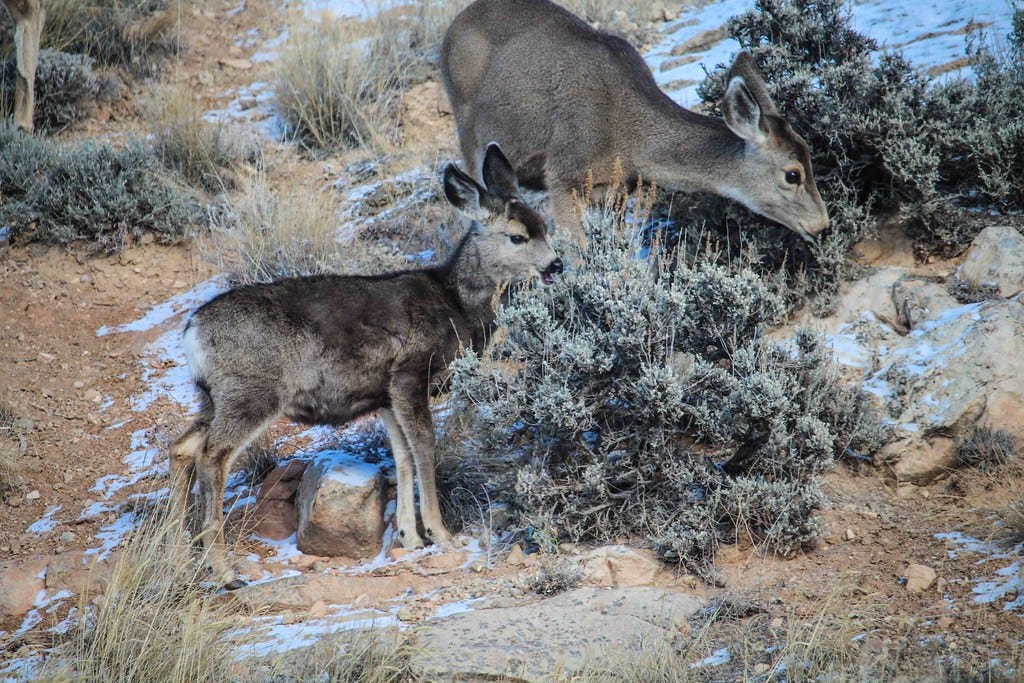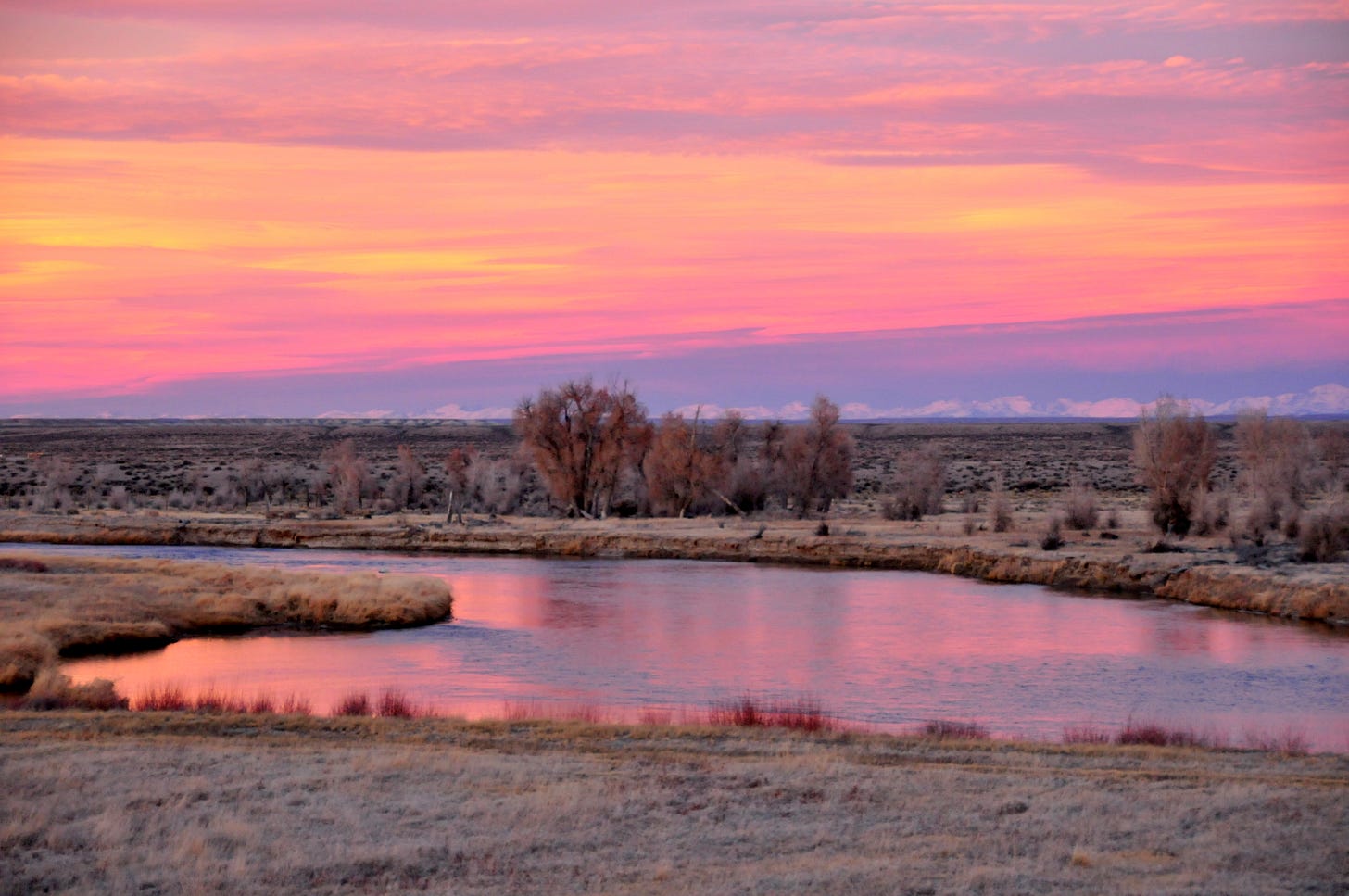If wilderness is passed down, then it must be culture
A story about Wyoming mule deer, Gothic cathedrals, and attitudes toward nature

The mule deer doe stands at the edge of the highway. It’s dusk in Wyoming, a two-lane road near Rock Springs in April. The doe is there with her fawns, waiting for a chance to cross. Maybe she steps forward, pauses, hears an oncoming vehicle and retreats. Later the doe tries again. The fawns follow, but they’re slower, weaker, more likely to dawdle. A car approaches. Are you paying close enough attention to slam on your brakes?
In his fantastic 2023 book Crossings, Ben Goldfarb summarizes the work of ecologist Corinna Riginos, who put cameras on remote Wyoming highways to study deer behavior. She found that if there was a 60-second gap between vehicles, the deer would likely cross safely. Under 30 seconds, almost guaranteed trouble. The deer are smart enough to learn this, which means they simply won’t cross the busiest highways. Sadly, that means they won’t get to the habitat on the other side, and may starve to death.

What I found most amazing about the story was that unlike birds tracking the stars, Goldfarb says that deer “learn to migrate, cultivating mental maps as they tail their mothers from winter range to summer pasture.” They then always take these inherited pathways, which is why building a highway across one can prove so devastating. Goldfarb continues, “Deer migration isn’t merely a movement pattern but a form of culture, transmitted from doe to fawn like family lore.”
Culture! I immediately resisted. Surely culture is symphony orchestras, Gothic cathedrals, stuffy museums, and innovative restaurants. Culture is human, culture is urban, culture is the glorious mingling of the creative and the intellectual, the individual and the community. How can mule deer have culture?
Then I looked up the meaning of culture, and found that it’s any way of life passed from generation to generation. Arts, beliefs, institutions, rituals, pastimes, social behaviors, norms—culture is anything that’s transmitted to future generations by learning rather than by genetics.
So when New Yorkers sniff that Wyoming has no culture, what they mean is that the culture there doesn’t interest them, or maybe doesn’t fit the values they were trained in. And when wilderness advocates urge acolytes to read John Muir, Edward Abbey, or Terry Tempest Williams, they are trying to pass on wilderness-as-culture.
Wilderness-as-culture seems counterintuitive. Wilderness appears to be nature. One might reason that wilderness is the absence of humans and our institutions. Even the most beautiful Gothic cathedral, plopped into the middle of the Gros Ventre Wilderness Area, would negate its wilderness-ness. The imposition of human culture would make it something other than wilderness.
The problem with that reasoning is that it equates “human culture” with “European culture.” As places, wilderness areas have long been shaped by mule deer cultures and Indigenous cultures, among others. They are now being shaped by the cultures of the US Forest Service, Sierra Club, and other institutions. Meanwhile, as an idea, untrammeled wilderness is very much a product of one specific culture, the Euro-American settler-colonial culture, which sought to set aside certain places from its own destructive tendencies. As an idea, of course, it has to be culture: something that generates a set of institutions, laws, and pastimes; embodies a set of values; and is passed on by learning rather than genetics.
Personally, I like wilderness culture. It embodies a set of values I agree with. It enshrines rituals, such as backpacking trips, that I enjoy. It encourages social behaviors, such as being humble in the face of natural systems, that I was trained in. It enforces norms, such as leave-no-trace camping ethics, that I believe are good for the world. But I can’t assume that these factors would make sense to someone of a different culture.
And there are times when I, like a mule deer on an April Wyoming evening, pause and hesitate. What is this road doing here? How will I know when it’s safe to reach my destination? And how do I impart that knowledge to these fragile, loved youth who will follow in my footsteps?




Reminds me of some deep reading I had to do on the word "civilization" last year. Enjoyable read, thank you!
These missives normally go out on Tuesdays at 5pm, but today I accidentally set it for 5am. Apologies for the timing inconsistency! :)